22 Native American Medicinal Plants for Your Healing Garden
Discover 22 Native American medicinal plants to grow in your garden. Learn about traditional healing herbs that bring beauty, wellness, and heritage to your space.
MISCTEAS, HERBAL BLENDS, TISANES
As an Amazon Associate, I earn from qualifying purchases. This means I may earn a commission if you click on an affiliate link and make a purchase, at no extra cost to you.


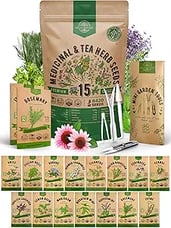

Organo Republic 15 Medicinal & Tea Herb Seeds Variety Pack 6,420+ Non-GMO Heirloom Garden Seeds for Indoor & Outdoors, Including Anise, Borage, Cilantro, Chamomile, Dandelion, Rosemary Seeds
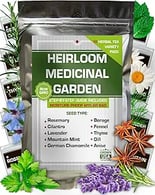

10 Medicinal Herb Seeds - Heirloom, Non GMO, USA Made - 2050 Most Needed Herbal and Medical Tea Seeds Pack for Planting Indoors and Outdoors - Lavender, Mountain Mint, Chamomile & More
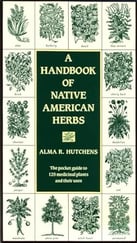

A Handbook of Native American Herbs: The Pocket Guide to 125 Medicinal Plants and Their Uses (Healing Arts)
10 Medicinal Herb Seeds - Heirloom, Non GMO, USA Made - 2050 Most Needed Herbal and Medical Tea Seeds Pack for Planting Indoors and Outdoors - Lavender, Mountain Mint, Chamomile & More
Medical Disclaimer:
The information provided in this article is for educational and informational purposes only and is not intended as medical advice. These descriptions of traditional Native American medicinal plants and their uses are based on historical and cultural practices. Please consult a qualified healthcare provider before using any herbal remedies, especially if you are pregnant, nursing, taking medications, or have any medical conditions. Use of any herbs or plants should be done responsibly and under the guidance of a trained professional. The authors and publishers are not responsible for any adverse effects or consequences resulting from the use of any suggestions, preparations, or procedures discussed in this article.
22 Essential Native Plants for Your Healing Garden 🌱
For centuries, Native Americans cultivated deep knowledge of nature's medicine. From vibrant flowers to fragrant herbs, each plant held powerful healing properties and symbolized harmony between body and spirit. This guide offers a handpicked selection of traditional medicinal plants that will not only beautify your garden but also bring a touch of ancient wisdom and natural wellness to your life. Perfect for anyone seeking a sustainable, healing-focused garden inspired by Native American traditions.
1. Yarrow (Achillea millefolium)
Traditional Use: Stops bleeding, soothes upset stomachs, and aids digestion.
Growing Tips: Thrives in well-drained soil and full sun.
Yarrow is a perennial herb known for its delicate clusters of white or pink flowers and feathery green leaves. Traditionally, Native Americans used yarrow for its powerful healing properties, especially for treating wounds and stopping bleeding. The plant’s astringent and anti-inflammatory qualities make it effective in reducing swelling and promoting skin healing. Yarrow was often applied as a poultice or infused into teas to help alleviate digestive issues and fevers. Beyond its medicinal uses, yarrow is an attractive addition to gardens, requiring little maintenance and thriving in well-drained soil and full sunlight. With a history of both practical and ceremonial use, yarrow embodies the harmony between health and nature found in traditional herbal practices.
Potential Side Effects: Skin irritation, photosensitivity
Interactions: Blood-thinning medications
Contraindications: Pregnancy (may stimulate uterus)
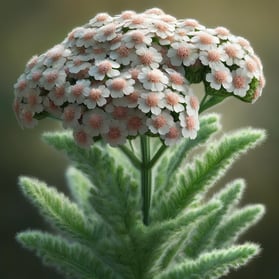

2. Sumac (Rhus spp.)
Traditional Use: Treats eye problems, sore throats, and poison ivy.
Growing Tips: Prefers sunny, dry locations.
Sumac, known for its striking red berries and vibrant foliage, has long been valued in Native American medicine for its versatile healing properties. This plant’s berries, leaves, and bark were used for a range of treatments. A decoction made from sumac berries served as a natural remedy for sore throats, reducing fever, and treating diarrhea, while a poultice made from the leaves was applied to soothe poison ivy and other skin irritations. Sumac is also one of the few native plants traditionally used to treat eye infections and inflammation. Easily cultivated in sunny, dry areas, sumac’s bright berries can be dried and ground into a tangy spice, rich in antioxidants. Sumac is a resilient plant with both medicinal and culinary appeal, making it a valuable addition to any healing garden.
Potential Side Effects: Mild digestive upset in large doses
Interactions: None known
Contraindications: Allergies to cashew family
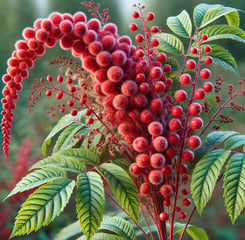

3. Blackberry (Rubus fruticosus)
Traditional Use: Soothes sore throats and relieves upset stomach.
Growing Tips: Grows well in partial shade and moist
Blackberry is more than a delicious fruit; it has a rich history in Native American herbal medicine, especially for treating digestive and immune issues. The Cherokee, for instance, made blackberry tea to relieve stomach upsets and diarrhea, thanks to the berry’s natural astringent properties. The roots and leaves were also chewed or brewed into a tea to soothe swollen tissues, joint pain, and even sore throats. High in vitamins C and K, blackberries support overall immune health and healing. In addition to its medicinal uses, blackberry is beloved for its sweet, juicy berries, which can be harvested in late summer. Thriving in partial shade and moist, well-drained soil, blackberry plants are both nutritious and practical, bringing a wealth of benefits to the garden.
Potential Side Effects: None in normal doses
Interactions: None known
Contraindications: None reported
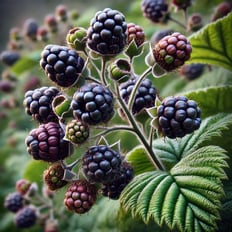

4. Rosemary (Rosmarinus officinalis)
Traditional Use: Eases sore joints, improves memory, and supports immune health.
Growing Tips: Prefers full sun and well-drained soil.
Rosemary, often cherished for its aromatic leaves and culinary uses, also has deep roots in traditional Native American medicine. Considered sacred by several tribes, rosemary was used as a powerful analgesic to relieve muscle and joint pain. Its stimulating scent and natural oils were believed to enhance memory, lift the spirit, and promote overall circulation. Beyond its pain-relieving properties, rosemary was also used to boost the immune system and aid in digestion. This hardy evergreen plant flourishes in well-drained soil and full sunlight, adding structure and fragrance to any garden. With its potent medicinal benefits and resilience, rosemary stands as a symbol of strength and healing in both culinary and herbal traditions.
Potential Side Effects: Skin irritation in sensitive individuals
Interactions: Blood pressure medications (may raise BP)
Contraindications: Pregnancy (may stimulate menstruation)
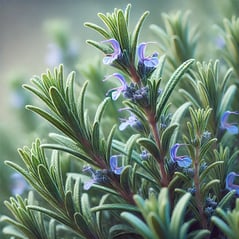

5. Mint (Mentha spp.)
Traditional Use: Eases digestive issues and soothes skin.
Growing Tips: Grows best in moist, well-drained soil and full sun.
Mint is a cooling, aromatic herb that has been a staple in Native American herbal medicine, primarily for its soothing effects on digestion and respiratory health. Tribes like the Cherokee prepared mint tea to calm upset stomachs, ease digestive discomfort, and reduce fever. Additionally, the leaves were crushed to create a refreshing salve for relieving skin irritations, rashes, and itching. Mint’s invigorating scent is also known to help relieve headaches and clear nasal passages. Thriving in moist, well-drained soil and partial to full sunlight, mint grows vigorously, often spreading easily in the garden. Its versatility in both medicinal and culinary applications makes mint a beloved plant that offers a natural boost to well-being.
Potential Side Effects: Acid reflux, heartburn
Interactions: Antacids (may worsen reflux)
Contraindications: GERD, hiatal hernia
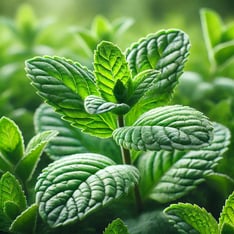

6. Red Clover (Trifolium pratense)
Traditional Use: Reduces inflammation and supports respiratory health.
Growing Tips: Thrives in full sun and fertile, well-drained soil.
Red Clover, with its bright pinkish-purple flower heads, is a hardy plant that has long been valued in Native American herbal medicine for its anti-inflammatory and respiratory benefits. Traditionally, healers used red clover to treat coughs, colds, and other respiratory issues by making teas from its flowers. Recent studies have shown that red clover contains isoflavones, which can help improve circulation and even support heart health by lowering cholesterol. This resilient plant grows well in full sun and fertile, well-drained soil, enriching the soil with nitrogen as it grows. Red clover is both functional and attractive, adding beauty to the garden while offering an array of medicinal benefits.
Potential Side Effects: Headaches, nausea in large doses
Interactions: Blood thinners
Contraindications: Pregnancy, hormone-sensitive conditions
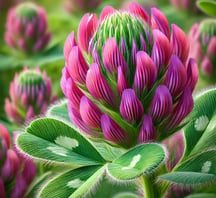

7. Black Gum Bark (Nyssa sylvatica)
Traditional Use: Mild tea for chest pain relief.
Growing Tips: Prefers acidic, moist soil.
Black Gum Bark, derived from the Black Gum tree, was traditionally used by Native Americans, particularly the Cherokee, to create mild teas for relieving chest pain and respiratory discomfort. The inner bark contains compounds that help reduce inflammation and soothe coughs, making it useful in treating ailments associated with the lungs and chest. Black Gum trees are also valued for their striking autumn foliage, turning vibrant shades of red, yellow, and purple, which adds beauty to any landscape. This tree thrives in moist, acidic soils and partial sunlight, often found in the wild near rivers or wetlands. In addition to its medicinal uses, Black Gum Bark contributes ecological value, supporting wildlife and enhancing natural biodiversity in the garden.
Potential Side Effects: Mild nausea, stomach upset
Interactions: None known
Contraindications: None reported
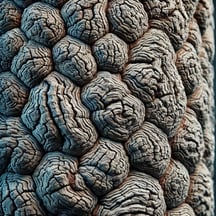

8. Cattail (Typha latifolia)
Traditional Use: Digestible food and preventive medicine.
Growing Tips: Thrives in moist soil, usually in wetland areas.
Cattail, often called the “supermarket of the swamp,” has been an essential plant in Native American culture, valued for its nutritional and medicinal properties. Known for its tall, reed-like appearance with distinctive brown flower spikes, cattail was a staple food source, especially during lean times. The roots and shoots are edible, providing a source of carbohydrates, and are easily digested, making them ideal for recovery from illness. Medicinally, cattail poultices were applied to wounds, burns, and sores to speed healing and reduce inflammation. This versatile plant grows well in wet, marshy soils and full sun, creating natural habitat spaces in the garden. Cattail embodies the resourcefulness of Native American herbal wisdom, offering nourishment, healing, and practical uses in a single plant.
Potential Side Effects: Generally safe
Interactions: None known
Contraindications: None reported
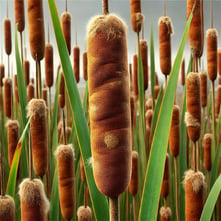

9. Pull Out a Sticker (Greenbriar) (Smilax spp.)
Traditional Use: Used as a blood purifier and joint pain reliever.
Growing Tips: Prefers shaded forest areas with moist soil.
Commonly known as Greenbriar, “Pull Out a Sticker” is a resilient, thorny vine that has been traditionally used by Native Americans for its medicinal properties. The roots of Greenbriar were often brewed into a tea as a blood purifier and to relieve joint pain. Some healers also created a salve from the leaves and bark, combined with animal fat, to treat minor sores, burns, and scalds. Known for its tough, spiny vines, Greenbriar can be challenging to handle, which likely inspired its nickname. It grows well in shady, forested areas with moist soil, often creating dense, thorny thickets. Beyond its medicinal value, Greenbriar is a food source for wildlife, making it a hardy addition to a natural or medicinal garden.
Potential Side Effects: Mild digestive upset
Interactions: None known
Contraindications: None reported
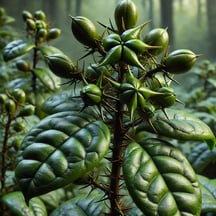

10. Hummingbird Blossom (Buck Brush) (Ceanothus americanus)
Traditional Use: Treats throat conditions, cysts, and inflammation.
Growing Tips: Grows best in sunny locations with well-drained soil.
Hummingbird Blossom, also known as Buck Brush, is a small, hardy shrub with clusters of delicate white flowers that attract pollinators, especially hummingbirds. Native Americans used this plant for a variety of medicinal purposes, including treating mouth and throat infections, easing inflammation, and addressing lymphatic blockages. Its roots were commonly made into a tea that acts as a mild diuretic, stimulating kidney function and aiding in detoxification. Early settlers also found it to be a useful tea substitute, which led to its nickname “New Jersey Tea.” Hummingbird Blossom thrives in full sun and well-drained soil, adding beauty to the garden with its lovely blooms and providing important ecological benefits for pollinators.
Potential Side Effects: None in normal doses
Interactions: None known
Contraindications: None reported
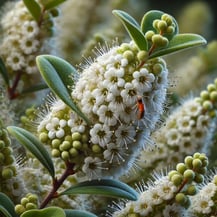

11. Wild Rose (Rosa woodsii)
Traditional Use: Used to prevent and treat colds; also soothes sore throats.
Growing Tips: Thrives in full sun and well-drained soil, growing well in open spaces.
Wild Rose, with its delicate pink blooms and sweet fragrance, is not only beautiful but also deeply valued in Native American medicine. Known for its high vitamin C content, rose hips were used to strengthen the immune system, treat colds, and support overall wellness. The petals and leaves were brewed into a mild tea to soothe sore throats and aid digestion. Additionally, the leaves and petals have gentle astringent properties, which made them useful in treating minor wounds and skin irritations. Wild Rose is easy to grow in full sun and well-drained soil, and its vibrant flowers attract pollinators to the garden. With its blend of beauty, resilience, and medicinal properties, Wild Rose is a cherished addition to any healing garden.
Potential Side Effects: None in normal doses
Interactions: None known
Contraindications: None reported
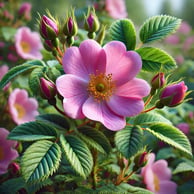

12. Saw Palmetto (Serenoa repens)
Traditional Use: Supports digestion and reduces inflammation.
Growing Tips: Prefers sandy soil and full sun, often found in warm climates.
Saw Palmetto is a fan-shaped palm native to the southeastern United States, especially valued by Native Americans for its medicinal fruit. The berries were traditionally used to support digestive health, reduce inflammation, and stimulate appetite. Saw Palmetto is perhaps best known today for its use in supporting prostate health, a use supported by recent studies. The berries are rich in fatty acids and phytosterols, contributing to their anti-inflammatory and hormone-balancing effects. This hardy plant thrives in sandy, well-drained soil and full sunlight, making it ideal for warmer climates. Its distinctive fan-like leaves and medicinal berries make Saw Palmetto a unique and beneficial addition to a medicinal garden.
Potential Side Effects: Stomach discomfort, diarrhea
Interactions: Hormone therapies
Contraindications: Pregnancy, breastfeeding
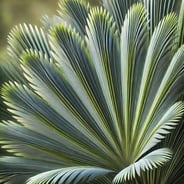

13. Sage (Salvia officinalis)
Traditional Use: Used in rituals for purification and for treating cramps, colds, and flu.
Growing Tips: Thrives in full sun and well-drained soil. Prune regularly to encourage growth.
Sage is a sacred and versatile herb with a rich history in Native American culture, used both for its medicinal properties and its spiritual significance. Known for its purifying qualities, sage was commonly burned in rituals to cleanse spaces and drive away negative energy. Medicinally, sage leaves were brewed into teas to soothe sore throats, ease digestive discomfort, and relieve colds and flu. Its anti-inflammatory and antibacterial properties also made it useful for treating cuts and skin infections. Sage is a hardy, drought-resistant plant that thrives in well-drained soil and full sun, adding a fragrant and functional presence to any garden. Revered for its ability to heal both body and spirit, sage is a cornerstone of traditional herbal medicine.
Potential Side Effects: High doses may cause seizures
Interactions: Anticonvulsants
Contraindications: Pregnancy (may stimulate menstruation)
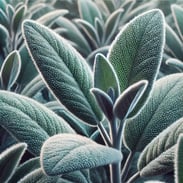

14. Wild Ginger (Asarum canadense)
Traditional Use: Used for earaches, digestive issues, and respiratory health.
Growing Tips: Prefers shaded areas with moist, rich soil.
Sage is a sacred and versatile herb with a rich history in Native American culture, used both for its medicinal properties and its spiritual significance. Known for its purifying qualities, sage was commonly burned in rituals to cleanse spaces and drive away negative energy. Medicinally, sage leaves were brewed into teas to soothe sore throats, ease digestive discomfort, and relieve colds and flu. Its anti-inflammatory and antibacterial properties also made it useful for treating cuts and skin infections. Sage is a hardy, drought-resistant plant that thrives in well-drained soil and full sun, adding a fragrant and functional presence to any garden. Revered for its ability to heal both body and spirit, sage is a cornerstone of traditional herbal medicine.
Potential Side Effects: Mild skin irritation; may cause nausea if consumed in large amounts
Interactions: None known
Contraindications: Pregnancy (contains trace amounts of aristolochic acid, which can be toxic in high doses)
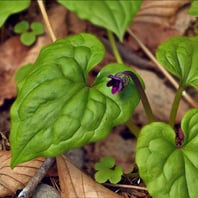

15. Slippery Elm (Ulmus rubra)
Traditional Use: Soothes sore throats, stomach issues, and skin irritations.
Growing Tips: Prefers moist, well-drained soil in a partly shaded area.
Slippery Elm, valued for its soothing inner bark, has been a cornerstone of Native American herbal medicine for treating various ailments. The inner bark, when mixed with water, forms a mucilaginous gel that coats and soothes irritated tissues, making it especially effective for sore throats, coughs, and digestive issues. It was also applied to wounds, burns, and skin irritations to promote healing and reduce inflammation. Slippery Elm is a resilient tree that thrives in moist, well-drained soils and prefers partial shade. Beyond its medicinal uses, the inner bark was traditionally used for making ropes, baskets, and other practical items. Known for its gentle yet powerful healing properties, Slippery Elm is an invaluable plant for natural remedies.
Potential Side Effects: May delay absorption of other medications
Interactions: Oral medications
Contraindications: Pregnancy (consult provider before use)
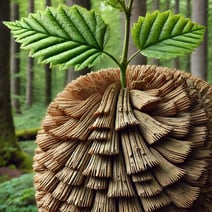

16. Lavender (Lavandula angustifolia)
Traditional Use: Treats insomnia, anxiety, and headaches.
Growing Tips: Prefers full sun and well-drained soil.
Lavender, cherished for its calming fragrance and beautiful purple blooms, holds a special place in both traditional and modern herbal medicine. Native Americans used lavender for its relaxing and mood-lifting properties, often using it to ease insomnia, anxiety, and depression. The essential oils in lavender also have natural antiseptic and anti-inflammatory effects, making it useful for treating minor burns, insect bites, and skin irritations. Lavender thrives in full sun and well-drained soil, bringing both beauty and tranquility to the garden. Its gentle, soothing nature makes lavender a beloved plant for promoting mental and physical wellness.
Potential Side Effects: Drowsiness, mild skin irritation
Interactions: Sedatives
Contraindications: Surgery (stop 2 weeks before)
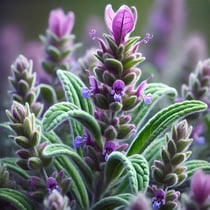

17. Prickly Pear Cactus (Opuntia spp.)
Traditional Use: Used to treat wounds, burns, and urinary infections.
Growing Tips: Thrives in full sun and sandy, well-drained soil.
Prickly Pear, a resilient cactus with flat, paddle-like pads and vibrant red or yellow fruits, has long been valued in Native American medicine for its versatile healing properties. The pads and fruits were used to treat wounds, burns, and boils by applying them as a poultice due to their anti-inflammatory and antiseptic properties. Prickly Pear fruit is rich in antioxidants, vitamins, and minerals, supporting immune health and even helping to lower cholesterol. Additionally, a tea made from the pads was traditionally used to alleviate urinary tract infections and improve digestion. This cactus is easy to grow in warm, dry climates, thriving in sandy or rocky soils and full sun. Prickly Pear is both a nutritious food source and a powerful healing plant that embodies resilience and vitality.
Potential Side Effects: Nausea, mild digestive upset
Interactions: Diabetes medications
Contraindications: Diabetes (monitor blood sugar closely)
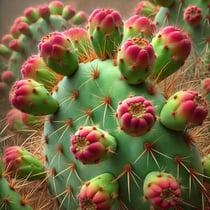

18. Honeysuckle (Lonicera spp.)
Traditional Use: Used for respiratory infections and joint pain.
Growing Tips: Grows well in partial sun with moist soil, and benefits from a support structure.
Honeysuckle, with its sweetly fragrant, tubular flowers, has been cherished for centuries in Native American medicine for its powerful healing properties. Traditionally, it was used to treat respiratory ailments such as asthma and upper respiratory infections. Honeysuckle’s anti-inflammatory and antibacterial effects also made it a go-to remedy for joint pain, rheumatoid arthritis, and skin conditions. The flowers and leaves were often brewed into a tea to soothe sore throats and relieve cold symptoms. Honeysuckle thrives in partial sun and well-drained soil, with climbing vines that attract pollinators, adding beauty and medicinal value to the garden. With its delicate blooms and wide-ranging benefits, honeysuckle is both a sensory delight and a healing ally.
Potential Side Effects: Allergic reactions in sensitive individuals
Interactions: None known
Contraindications: Pregnancy, breastfeeding
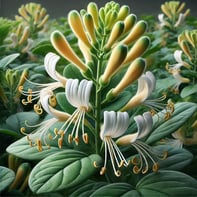

19. Ashwagandha (Withania somnifera)
Traditional Use: Treats bone and muscle weakness, enhances vitality, and reduces inflammation.
Growing Tips: Prefers well-drained, sandy soil in full sun.
Ashwagandha, often called “Indian ginseng,” is an ancient medicinal herb that Native American healers and other traditional medicine systems used for its adaptogenic qualities. Known for boosting vitality and resilience, ashwagandha helps reduce stress, improve stamina, and promote relaxation. Native American and traditional practitioners have used its roots to treat muscle weakness, joint pain, memory loss, and as a general tonic to enhance physical and mental wellness. The plant grows well in warm climates, thriving in sandy, well-drained soil with full sunlight. With its restorative properties and overall rejuvenating effects, ashwagandha is a valuable addition to a healing garden for those seeking natural support in managing stress and fatigue.
Potential Side Effects: Drowsiness, stomach upset
Interactions: Sedatives, thyroid medications
Contraindications: Pregnancy, autoimmune disorders
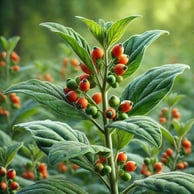

20. Mullein (Verbascum thapsus)
Traditional Use: Eases respiratory issues and joint inflammation.
Growing Tips: Thrives in dry soil and full sun.
Mullein, easily recognized by its tall stalks and fuzzy leaves, has been a staple in Native American herbal medicine, especially for treating respiratory issues. The leaves and flowers of mullein were commonly used to create teas and infusions that help soothe coughs, bronchitis, and asthma by reducing inflammation and easing congestion. Mullein's natural antibacterial properties also made it a popular remedy for sore throats and minor infections. It’s a hardy plant that thrives in dry, well-drained soil and full sunlight, often growing wild along roadsides and open fields. Known for its ability to support respiratory health, mullein is a valuable and visually striking addition to any medicinal garden.
Potential Side Effects: Skin irritation from fresh leaves
Interactions: None known
Contraindications: None reported
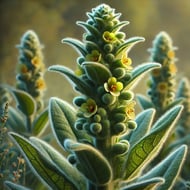

21. Licorice Root (Glycyrrhiza glabra)
Traditional Use: Treats stomach ailments, fatigue, and respiratory issues.
Growing Tips: Grows well in sandy soil and full sun.
Licorice Root, cherished for its naturally sweet flavor, has long been used in Native American medicine for its soothing effects on the digestive and respiratory systems. Its anti-inflammatory and antimicrobial properties make it helpful in treating stomach ulcers, bronchitis, sore throats, and chronic fatigue. Native healers often brewed the root into teas to relieve digestive discomfort, while its natural compounds helped ease coughs and respiratory inflammation. Licorice Root thrives in sunny, sandy, well-drained soil and can grow into a sturdy perennial shrub, providing both medicinal benefits and a pleasant flavor. As a versatile healing herb, licorice root adds value and sweetness to any herbal garden.
Potential Side Effects: High blood pressure, low potassium, headaches
Interactions: Blood pressure medications, diuretics
Contraindications: Pregnancy, hypertension, kidney disease
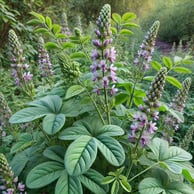

22. Devil’s Claw (Harpagophytum procumbens)
Traditional Use: Reduces swelling and eases joint pain and arthritis.
Growing Tips: Prefers sandy, well-drained soil and warm climates.
Devil’s Claw, named for its distinctive, claw-shaped seed pods, is a potent medicinal herb traditionally used by Native Americans and other cultures for its anti-inflammatory properties. The root of Devil’s Claw is especially valued for relieving joint pain, arthritis, and muscle soreness. Known to support digestive health, teas or decoctions made from the root were used to alleviate indigestion and stimulate appetite. Modern studies support its use for reducing inflammation, making it popular as a natural remedy for chronic pain conditions. Devil’s Claw thrives in dry, sandy soil and full sun, ideal for warm, arid climates. With its powerful healing qualities, this hardy plant is both a unique and beneficial addition to a medicinal garden focused on pain relief and inflammation management.
Potential Side Effects: Nausea, digestive upset
Interactions: Blood thinners, antacids
Contraindications: Ulcers, gallstones, diabetes
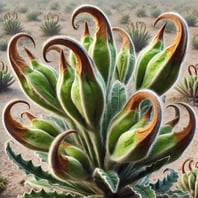

If you enjoyed learning about Native American medicinal plants, you’ll just love these guides:


